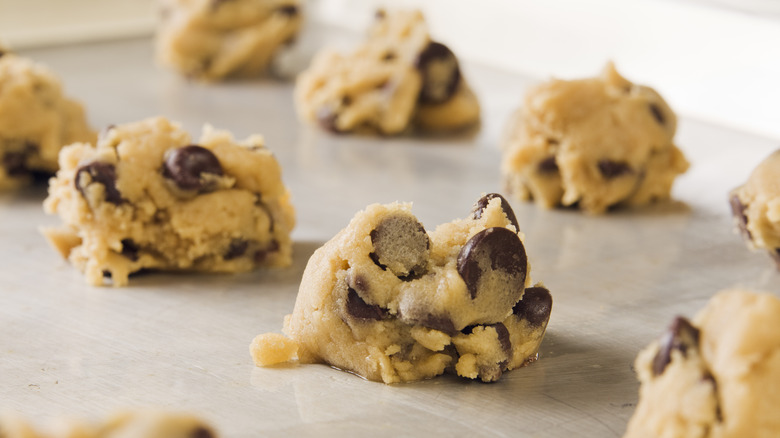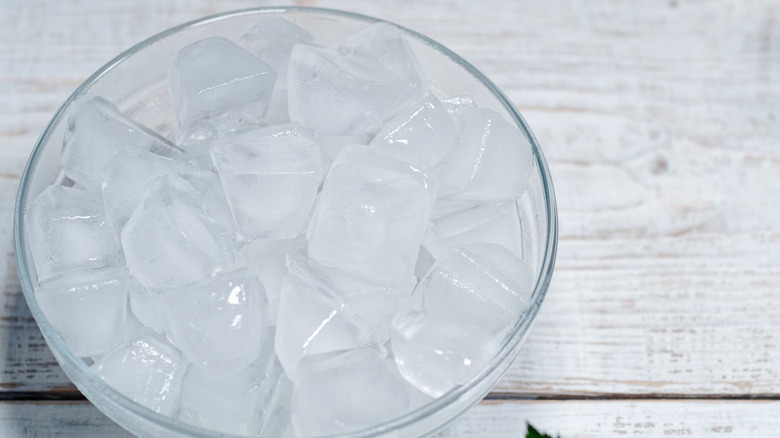Ice Water Is The Key To Delicious Cookies That Don't Spread
Are your homemade cookies often ending up a bit too flat or uneven? It's a common issue that many home bakers face. But the solution to perfectly rounded, evenly baked cookies is somewhat unexpected. The answer lies in a technique typically associated with blanching vegetables or boiling eggs: It's the humble ice bath.
For baking aficionados, maintaining the right dough temperature is crucial. If your cookie dough gets too warm, it can spread out too much during baking, leading to thin, flat cookies. While there are some types of cookie dough you shouldn't refrigerate, the key to preventing some dough from spreading too much is to keep the fat colder for longer. When the dough is cooled, the fats solidify. This means that when the cookies start baking, the now-solid fats take longer to melt, limiting the spread and maintaining the dough's shape. The result is a thicker, chewier cookie with a beautiful golden-brown color.
While some might suggest chilling the cookie dough (like Ina Garten's prep tip for perfect cookie dough), you can get the same results more quickly by using the ice bath technique. It's a professional technique that any baker can use, turning your good cookies into great ones.
How to use an ice bath for cookie dough
To use an ice bath to perfect your cookie dough, start by preparing a large bowl or roasting pan: Fill it with ice and top it off with water until the ice floats. Next, place your cookie dough in an airtight, sealed bag and flatten it out — the dough will get colder more quickly the more it's in contact with the water. Nestle the bag into the ice bath, ensuring the icy water is covering it as much as possible. You can also put your dough into a smaller bowl to fit into the ice bath. Just be careful to prevent the ice water from getting into the bowl, as even a little water can alter the texture of your cookies.
If you've put your dough in a bowl, stir it occasionally to ensure it cools evenly. It should take between 15 and 20 minutes for the dough to chill sufficiently. Once the dough is thoroughly cooled, scoop it onto your baking tray and bake according to your recipe. Work quickly to arrange your dough on the baking sheet — warm hands or a warm kitchen can soften the dough, so aim to get it in the oven while it's still chilled. For batch baking, keep the dough in the ice bath or refrigerate between batches.

